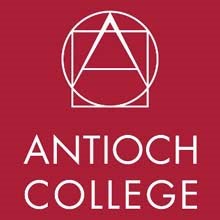Save the Date for Speaker & Author Doug Borwick!
Doug Borwick
Doug Borwick is author of the ArtsJournal blog Engaging Matters and author/editor of Building Communities, Not Audiences: The Future of the Arts in the United States. He served as President of the Board of the Association of Arts Administration Educators, an international organization of higher education programs in the field, from 2010-2012. For three decades he was Director of the Arts Management and Not-for-Profit Management Programs at Salem College in Winston-Salem, NC. Dr. Borwick is CEO of Outfitters4, Inc., providing management services for nonprofits and of ArtsEngaged, offering training and consultation services to artists and arts organizations seeking to more effectively engage with their communities. Dr. Borwick holds a Ph.D. in Music Composition from the Eastman School of Music and is an award-winning member of ASCAP.
In the fall of 2012 he presented workshops advocating for and providing training in community engagement in Illinois, Indiana, Michigan, North Carolina, Virginia, Washington, DC, and Wisconsin. In January he served as keynote speaker and workshop presenter for Ontario Dances in Toronto and the Texas Commission on the Arts biennial conference in Austin. This spring he will be a featured speaker in Cincinnati; Detroit; Madison, WI; New Orleans; and Washington, DC, as well as Dayton.
Building Communities, Not Audiences: The Future of the Arts in the United States holds that established arts organizations, for practical and moral reasons, need to be more deeply connected to their communities. It serves as an essential primer for any member of the arts community – artist, administrator, board member, patron, or friend – who is interested in the future of the arts. It also provides new ways of looking at the arts as a powerful force for building better communities and improving the lives of all.
It is from community that the arts developed
and it is in serving communities that the arts will thrive . . .
Communities do not exist to serve the arts;
the arts exist to serve communities.
and it is in serving communities that the arts will thrive . . .
Communities do not exist to serve the arts;
the arts exist to serve communities.
The economic, social, and political environments out of which the infrastructure for Western ‘high arts’ grew have changed. Today’s major arts institutions, products of that legacy, no longer benefit from relatively inexpensive labor, a nominally homogeneous culture, or a polity openly managed by an elite class. Expenses are rising precipitously and competition for major donors is increasing; as a result, the survival of established arts organizations hinges on their ability to engage effectively with a far broader segment of the population than has been true to date.
From the Foreword by Rocco Landesman, Chairman, National Endowment for the Arts:
“I think the days of the arts in
ivory towers are behind us; the very best arts organizations are . . .
connecting communities with artists . . . . Not only can the arts build
communities, I think we must.”
“Doug Borwick calls for substantive
rather than superficial efforts, authentic and systemic changes. . . .
The challenge is not whether to build communities or audiences but how
to build communities and audiences together.”








No comments:
Post a Comment